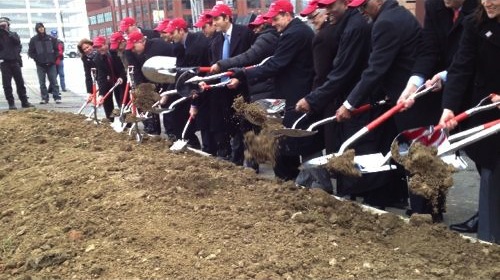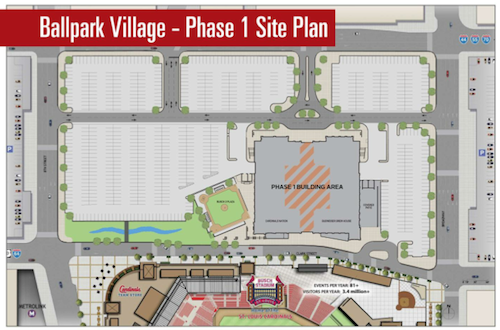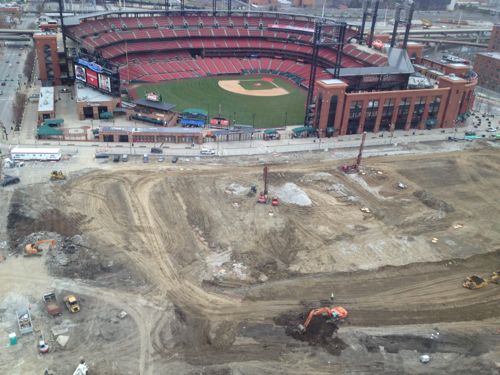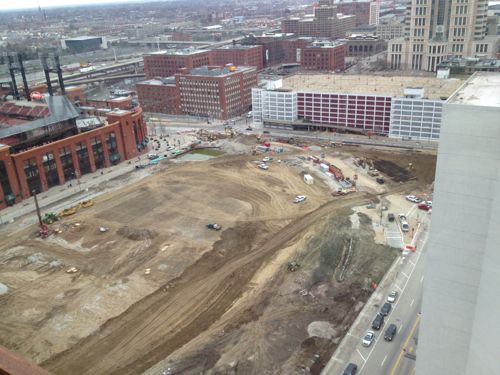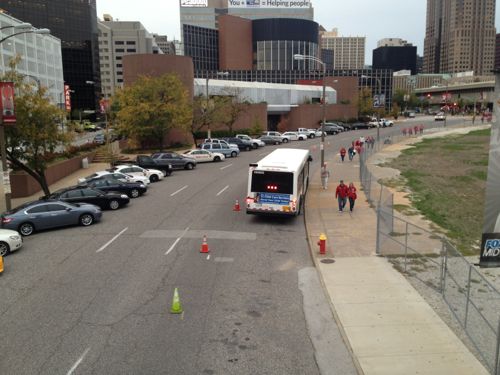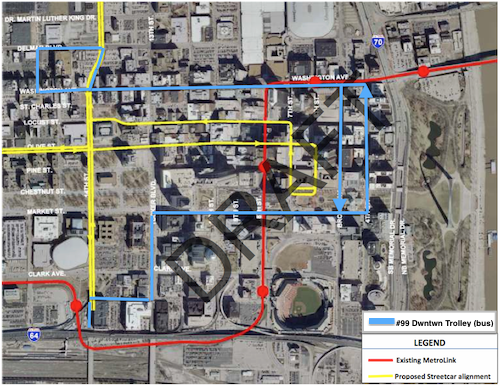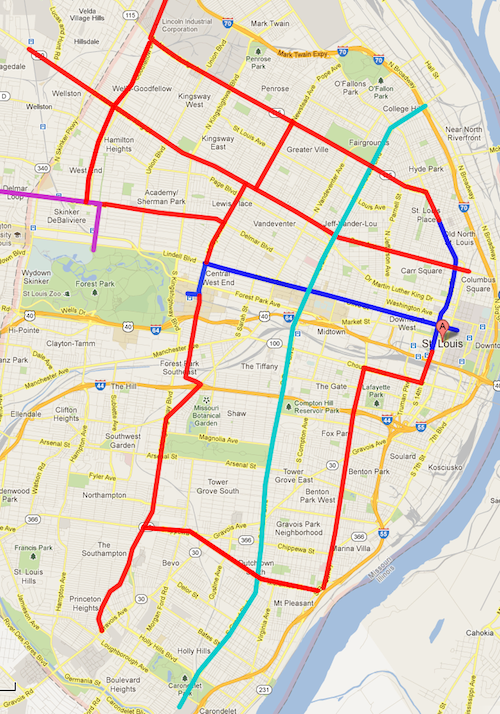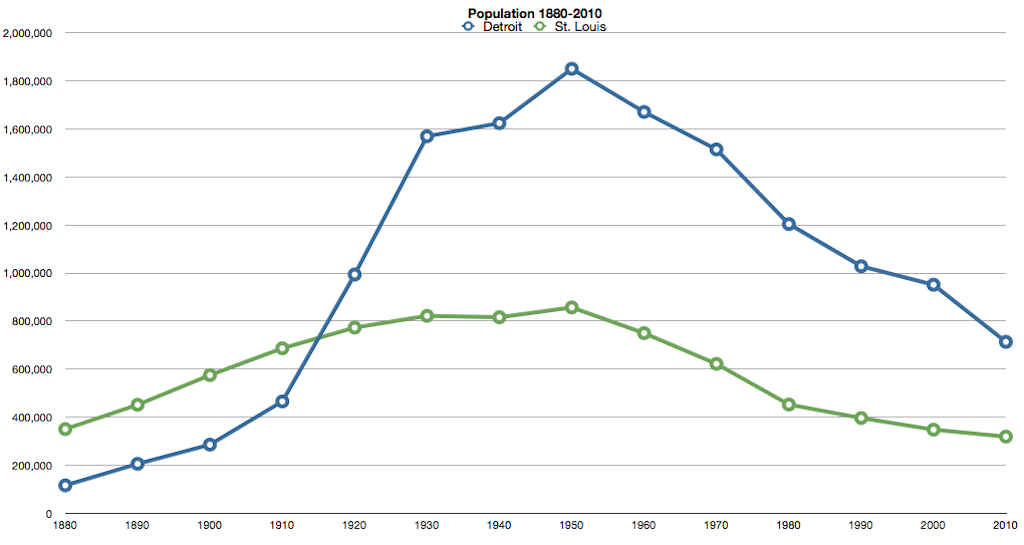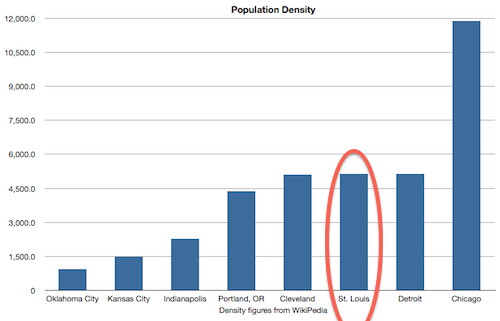St. Louis Rapid Transit Connector Study: First Round of Open House Meetings Scheduled March 28, April 2, and April 5
The following is a press release:
—-
Bi-State Development Agency (Metro) announced the first round of public open houses focusing on a new St. Louis Rapid Transit Connector Study scheduled for March 28, April 2 and April 5. The study is another step toward fulfilling Metro’s long-term goal of offering efficient, competitive and attractive transit services to more residents and more places in the St. Louis region.
The study, led by the Bi-State Development Agency (Metro) and the Transportation Corridor Improvement Group, will identify two transit investment projects to move forward in pursuit of federal funding. It is anticipated at least one project will be implemented as a result of this effort.
The St. Louis Rapid Transit Connector Study is a direct result of Moving Transit Forward, the long-range transit plan that highlighted the potential of using the region’s existing network of highways and major streets to provide higher-speed, limited-stop transit services. The general transportation corridors identified by the public as significant opportunities for high-performance transit are Interstates 70, 44, 64, and 55, major streets near those highways, and Grand Boulevard in St. Louis.
“By improving the connections between people and jobs, education, and other opportunities, we can maximize the potential not only of our transportation network, but of our residents and businesses as well,” said Jessica Mefford-Miller, Metro Chief of Planning and System Development.
The study takes a data-driven approach to identify and evaluate potential projects. Final recommendations will be shaped by several objectives, including improved access to transportation that supports economic growth; expansion of access to opportunities; enhanced employer access to a broader and more diverse labor pool; reduction of traffic congestion and air pollution; and financial feasibility.
The partners leading the St. Louis Rapid Transit Connector Study will answer questions and encourage discussion at the three upcoming public meetings. The meetings will be conducted in open-house style, with the attendees invited to participate in interactive activities designed to gather community input on project goals and transit performance criteria. Residents will also learn about the range of possible options for expanding cost-effective rapid transit service in St. Louis.
The same information will be presented at each of the public open houses.
· Thursday, March 28 from 4:30-7:30 p.m. A formal presentation will be made at 5:30 p.m. and again at 6:30 p.m. Located at the JC Penney Conference Center at the UMSL Campus. The meeting will be in the 1st Floor Lobby of the building located at 1 University Boulevard, St. Louis, MO 63121.
· Tuesday, April 2 from 4:30-7:30 p.m. A formal presentation will be made at 5:30 p.m. and again at 6:30 p.m. Located at the World Trade Center on the 10th Floor. The building is located at 121 S. Meramec Avenue, Clayton, MO 63105.
· Friday, April 5 from 11:30 a.m. to 1:30 p.m. A formal presentation will be made at noon. Located at St. Louis City Hall on the 2nd Floor Hall and in the Kennedy Room. City Hall is located at 1200 Market Street St. Louis, MO 63103.
More information and futures updates on the St. Louis Rapid Connector Study can be found at www.movingtransitforward.org/stlrapidtransit.
About the Transportation Corridor Improvement Group
The St. Louis Rapid Transit Connector Study is being conducted by the Bi-State Development Agency (Metro) in partnership with the Transportation Corridor Improvement Group, a partnership between East-West Gateway Council of Governments (EWGCOG), St. Louis County, the City of St. Louis, and the Missouri Department of Transportation (MoDOT).
